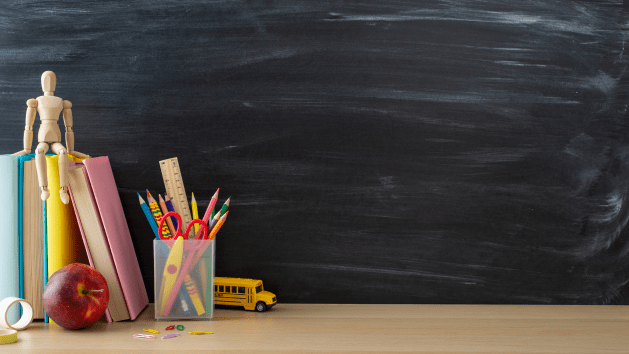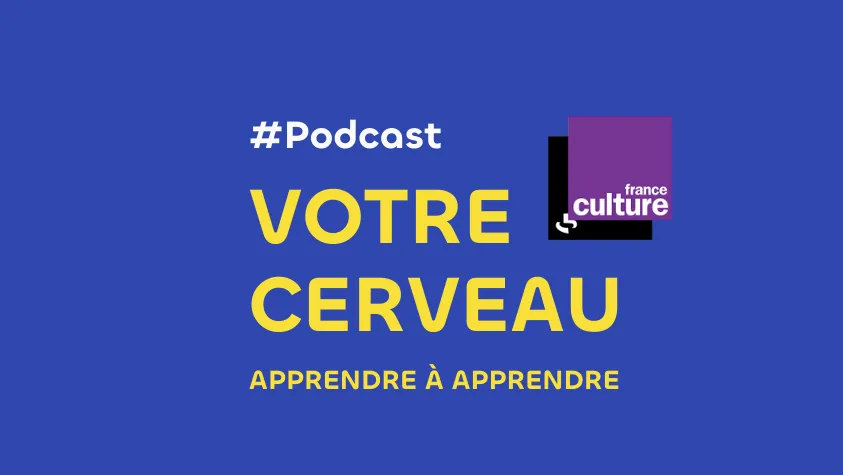
Flipped classroom: why and how does it work?

What is the flipped classroom?
Revolutionizing traditional teaching, the flipped classroom is a pedagogical device that tends to “invert” the places and objectives of learning. 🔄 In this innovative concept, unlike the traditional approach where theoretical content is presented at the start of a sequence by the teacher, students discover the theory at home. They rely on modern digital tools such as video or reading materials, to prepare before even setting foot in the classroom.
Once in the classroom, it’s time for action! 🌟 Classes are transformed into grounds for exchange and active experimentation. Here, students engage in practical activities, guided by the teacher’s scaffolding: these activities generally take a form that places students in the position of actors, for example: collaboration on group projects, dynamic discussions between students and with the teacher, and putting theoretical knowledge into practice on exercises and practical cases.
The objective? Boost student engagement, give them the keys to autonomy, and personalize tailor-made learning for each student. The inverted classroom would also enable higher-level cognitive activities (exercises) to be reserved for class time, when the teacher is present to provide better support for their learning, whereas the traditional approach often reserves this part for homework.
While the theoretical underpinnings of this approach are nothing new, it’s digital technology that is now breathing new life into its practical application.
Is technology necessary to adopt a flipped classroom approach?
The use of technology is not mandatory, but it does offer certain advantages. Without technology, teachers can rely on readings or written materials for students to tackle theory at home. In the classroom, the emphasis is on practical application.
With technology, the possibilities expand:
- Creation of theoretical content: technology saves time and increases efficiency.
- Customization: numerous tools are available to adapt resources to students’ needs.
- Accessibility and dissemination: theory becomes more accessible and less costly, to reach a wider audience, including students in remote situations. The flipped classroom device can be relevant for students away from the school environment (hospitalization, period of confinement-COVID).
- Content appeal: today’s generations of learners are fond of content that can be consumed on screen, more aesthetically pleasing, dynamic, and above all, interactive.
- Pedagogical differentiation: technology makes it easier to adapt teaching to each student.
Table summarizing the differences between so-called “classic” and “flipped” classroom models:
| Classic model | Inverted model | |
|---|---|---|
| Teacher’s role | Transmits knowledge | Guides and adapts |
| Student engagement | Risk of passivity | More active |
| Interactions | Centralized by the teacher | Favored between students |
| Comprehension | Controlled in an assessment context | Improved by exercising theory in concrete cases of application |
The benefits of the flipped classroom
- Student engagement: by actively involving students in their learning, the flipped classroom stimulates their motivation and interest. This method makes them actors in their learning and encourages better assimilation of knowledge.
- Personalized learning: each student progresses at his or her own pace, enabling more precise adaptation to individual needs. Teachers offer targeted support to meet different needs within the classroom.
- Development of autonomy: students learn to organize their work and manage their time, essential skills for their academic and professional futures.
- Increased interactions: class time is devoted to collaborative activities to enhance students’ social skills and enrich their educational experience.
- Flexibility in teaching: teachers adjust lessons in real time according to students’ reactions and needs, to make teaching more dynamic and effective.
- Valuing the role of the teacher: their role goes beyond that of disseminating knowledge, and reinforces it in a posture of accompanying the student, guiding, supporting, differentiating.
Potential obstacles
While the flipped classroom opens up promising pedagogical horizons, it is not without its limitations, not least the upstream workload involved in preparing materials and planning practical activities.
Student adaptation to this new pedagogy varies, with some students requiring specific support to flourish in this environment.
Another area of concern is the quality of the home study environment. Students faced with an inadequate personal work environment may find themselves at a disadvantage.
These challenges, while significant, do not overshadow the many advantages of the flipped classroom. Appropriate support and gradual implementation can help overcome them to reap the full benefits of this innovative approach. 🌱

Concretely, how does it work?
- First of all, it’s time for preparation. Ahead of the lesson, students immerse themselves in theory via materials provided or prepared by the teacher. This allows flexibility and teaches them to manage their time.
- In class, it’s time for action! It’s in this collaborative space that ideas flourish: group work, discussions and practical exercises. It’s a time for interaction and experimentation, in the presence of the teacher.
- The teacher’s superpower: being a guide. Goodbye to the traditional role of transmitter of knowledge, hello to that of inspirational guide! The teacher facilitates interactions and adapts teaching to answer each student’s individual questions as they practice.
- Follow-up and evaluation. Here, we measure the students’ commitment and ability to make practical use of the theory, on concrete application cases. Assessment takes into account students’ active participation and their ability to use theory to solve problem situations.
- And always, continuous adaptation. The teacher adjusts the course according to students’ needs and the evolution of the class.
✏ Note: there are several “recipes” for concocting a flipped classroom. Each teacher can draw from them according to his or her tastes and needs to create a tailor-made setup. The pedagogical model, the learning activities, the training materials… all can be carefully chosen to compose a unique and tasty learning experience. 🍽️📚
Is this new? Is it just for elementary school?
Think the flipped classroom is something brand new? Think again! 🕰️ This pedagogical concept isn’t a new kid on the educational block. In fact, it’s largely inspired by what’s been going on for a long time, particularly in Anglo-Saxon universities. There, the emphasis is on personal work, a sort of intellectual appetizer before the main course: the lecture.
When to use the flipped classroom?
Natural sciences, mathematics, languages… These subjects require practical application to truly grasp and integrate concepts. That’s where the flipped classroom comes in with a bang!
When student engagement is at half-mast
Feel like your students need a boost? The flipped classroom is the right remedy to awaken their curiosity.
When personalization is necessary
Every student is unique, and sometimes more personalized teaching is called for. At such times, the flipped classroom allows everyone to progress at their own pace, focusing on their specific needs.
To develop student autonomy
Would you like your students to become more independent in their learning? The flipped classroom encourages them to take the reins of their learning journey.
Engaging students in this way of working
To ensure that students use the resources made available to them in the flipped classroom, whenever possible, give priority to interactive or gamified content: as well as making the student an actor, and therefore engaged, these media often enable you to get an insight into their reactions – and can therefore help you as a diagnostic assessment!
Is the flipped classroom compatible with all subjects?
No, not for all subjects, nor all the time! Yet some (rather practical) subjects are particularly suited to the flipped classroom system:
Natural sciences
Imagine a lesson on plants. At home, children watch a fun video explaining the parts of a plant and their function. In class, they turn into little botanists: observe real plants, draw their different parts, or plant seeds to observe their growth. 🌱
Mathematics
For a lesson on geometric shapes, for example, children first familiarize themselves with the basic concepts at home through interactive online games. At school, they embark on a treasure hunt to find objects corresponding to these shapes in the classroom, reinforcing their understanding in a fun, hands-on way.
Languages
After listening to a recorded story at home, students come to class and draw their favorite scene, perform a little show based on the story, or even create a sequel to the story with their own ideas. This not only develops their understanding of the story, but also stimulates their imagination and narrative skills. 📚
To go further: the “flipped” classroom
Cell biology teacher Jean-Charles Cailliez’s “flipped classroom” method is a whole other revolution in the world of education. It’s based on the premise that teaching is the best way to learn. Imagine a world where the students become the teachers, and the teacher becomes the student. Fascinating, isn’t it? 🌟
In this class like no other, the teacher doesn’t hand out the course to his students. No, they don’t! Here, it’s up to them to take the reins. Working in teams of six, they divide up their roles as they would in a company, searching for information, building the course outline, and organizing the data. Then they present their course, with the teacher as an attentive and curious student. 📚 This approach is part of the active pedagogy trend, of which it is a perfect example.
For teachers wishing to embark on this pedagogical adventure, and with younger pupils in particular, it’s advisable to start small: for example, a presentation to their classmates on a period in history, or a sports lesson. The important thing is to dare to experiment and to be open to suggestions from students, so as to constantly improve the method. So, are you ready to turn the classroom upside down?
The Babaoo’ recap !
The flipped classroom is a pedagogical transformation where learning becomes more interactive and student-centered. In this model, students study outside and before the classroom, transforming classroom time into an opportunity to deepen, clarify and practice, in the presence of the teacher who is available to accompany them in this delicate phase of appropriation.
The role of the teacher evolves into that of a facilitator, focusing on personalized support and the encouragement of critical thinking. This system fosters autonomy, responsibility and a better understanding of subjects, while adapting teaching to students’ individual needs.
You may also be interested in these articles


